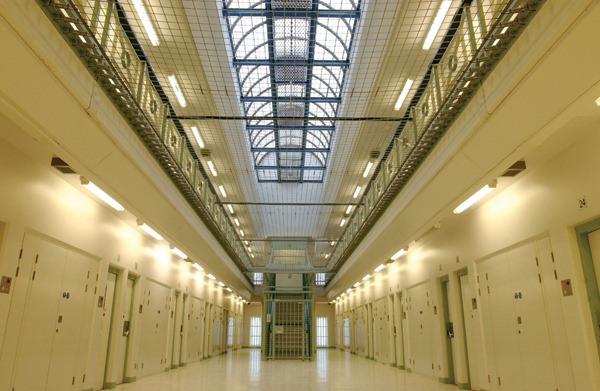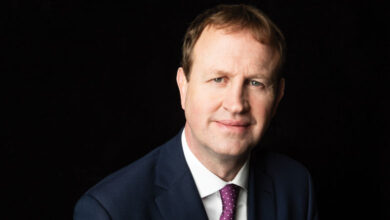Prisons: the way forward
eolas examines the State’s prison system and plans for new infrastructure.
Overcrowding, drug use, insufficient recreation or workshops and poor hygiene have consistently been cited as the main problems with the prison system.
The Irish Prison Service has said its most pressing issue is the “ever-increasing” number of prisoners and the high number of prisoners on temporary release, due to lack of spaces (see table).
The daily average number of prisoners has increased from 2,422 in 1997 to 4,290 in 2010. There were 4,229 prisoners in custody on 10 October 2011, with 765 (18 per cent) on temporary release.
Allowing prisoners temporary release has been causing concern because it is being used to cope with overcrowding, rather than what it was legislated for i.e. if the prisoner is considered to be rehabilitated and ready to re-enter society; their sentence is due to expire; to assist An Garda Síochána in apprehending another criminal; or on health or humanitarian grounds.
Justice Minister Alan Shatter has said that this is “simply unacceptable and that increasing those numbers to deal with overcrowding is not the solution.”
The Thornton Hall project review group (chaired by Association of Chartered Certified Accountants President Brendan Murtagh) stated that temporary release could rise with increasing committals, adding that “where no additional prison accommodation is provided … the concern must be that increasing the use of temporary release heightens the risk of releasing prisoners who pose a risk of harm to others.”
Commenting on the prison system in general, that report also states that overcrowding and a prison estate which is “long past its sell-by-date” has resulted in prisoners enduring “substandard conditions resulting in the State being in breach of its international obligations”.
It continues that the State needs to reduce its reliance on imprisonment and that building more prisons is not the answer. The report recommends “an adequate stock of prison accommodation that meets required standards so as to ensure that those who are sent to prison are detained in safe, secure custody and have the opportunity to engage in structured rehabilitation programmes that enable them to prepare for release back into society.”
Ireland’s prison system was scrutinised during the United Nations’ universal period review of Ireland’s human rights record (see page 42). The Committee against Torture (an independent body that monitors the implementation of the UN Convention against Torture) questioned the proposal for a large scale prison building project designed to reduce overcrowding (Thornton Hall) which aimed to accommodate up to 2,200 prisoners. Ten countries made recommendations on tackling overcrowding, providing in-cell sanitation, improving prison health and education and ensuring prison is used as a measure of last resort.
Judges are now required to prioritise community service when considering a sentence of 12 months or less, under the Criminal Justice (Community Service) (Amendment) Act 2011.
The Thornton Hall review group concluded that a smaller prison with 300 cells (including a toilet and shower) to accommodate 500 prisoners, would be more suitable. This would also include a step-down facility to accommodate up to 200 prisoners. The group also recommended a new prison at Kilworth, County Cork, with 200 cells.
Standards
The State has 14 prisons, some dating back to the 1800s (part of Shelton Abbey was built in 1770). The most modern are Cloverhill and the Dóchas Centre, built in 1999. Additions to Castlerea, Portlaoise and Wheatfield were built in 2010.
The Inspector of Prisons, Judge Michael Reilly, has consistently been critical of Ireland’s out-of-date prison infrastructure. In 2009 he published standards to be expected in Irish prisons, which included keeping all prisons clean, treating prisoners in a humane and ethical manner, ensuring access to healthcare, informing the Inspector of Prisons if a prisoner dies in custody, having one person in a cell where possible, access to
sanitary facilities that allow privacy allowing prisoners to practise their religion and regular monitoring of prisoners in observation, cladded or strip cells.
Four prisons of “major concern” are Castlerea, Cork, Limerick and Mountjoy. The Inspector’s 2009 inspection of Mountjoy (which was built in 1850) found prisoners sleeping on cell floors, in showers and in observation rooms; up to five people locked in cells with a bucket to function as a toilet; meals being eaten in cells infested with cockroaches and mice; and prisoners on protection being locked up for 23 hours a day.
A return inspection on 11 March 2011 found some improvements. However, overcrowding remained a problem: 710 inmates for a capacity of 517, i.e. 137 per cent of its capacity. The Inspector recommended that Mountjoy’s population should be capped at 600. The prison’s daily average bed capacity was 610, with a daily average of 667 prisoners.
In Castlerea Prison, the Inspector’s 2010 annual report notes that prisoners were locked in their cells for extended periods because 25 per cent of them wereon protection or due to staff shortages. It was dirty and did not provide adequate services and regimes for prisoners.
That prison’s 2010 daily average bed capacity was 351 and its daily average population 378. Cork Prison was “severely overcrowded” during last year’s inspection. The prison’s D wing had “filthy” cells and slopping out was still in practice. The Inspector’s 2009 report had recommended a maximum of
194 prisoners. Its 2010 average daily bed capacity was 272 and the daily average prisoner population was 303.
Drug use, violence, slopping out, a lack of CCTV, dirty cells and broken windows were major problems in Limerick Prison, the Inspector found. Overcrowding was also a problem. The average daily bed capacity in 2010 was 290 males and 22 females while the daily average population was 307 males and 26 females.
Overall bed capacity in 2010 was 102 per cent i.e. 4,203 average bed capacity and 4,290 average number in prison. The term ‘bed capacity’ is misleading, the Inspector has argued, because it doesn’t take account of international human rights standards. The Minister has said one of his priorities is to end the “inhumane” practice of ‘slopping-out’.
Infrastructure
The 2011 capital budget (€36.4 million) will be spent on a new accommodation block at the Midlands Prison (expected to cost €26.6 million.) and providing 70 more spaces for female prisoners at the Dóchas Centre in the Mountjoy complex, the Minister has indicated.
The Prison Service has stated that the Thornton Hall and Munster Regional Prisons (i.e. a new prison in Cork) are future priorities and adds that it must “also continue with its prison building and refurbishment programme.”
| Temporary release |
Committals
|
||
|---|---|---|---|
| 2007 | 153 | 5% | 11,934 |
| 2008 | 273 | 7.5% | 13,557 |
| 2009 | 535 | 12% | 15,425 |
| 2010 | 732 | 17% | 17,179 |






